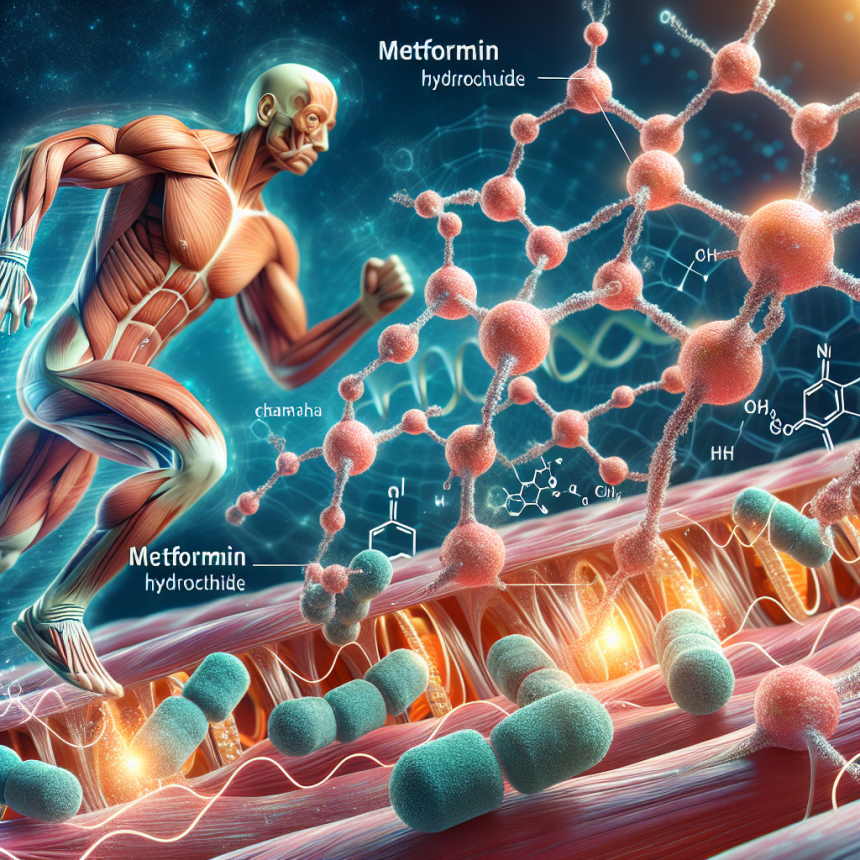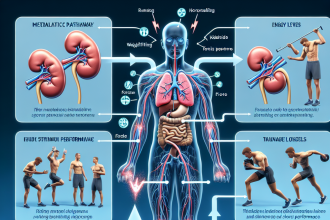-
Table of Contents
- The Action of Metformin Hydrochloride on Muscles During Physical Activity
- The Role of Metformin Hydrochloride in Sports Performance
- The Pharmacokinetics and Pharmacodynamics of Metformin
- Real-World Applications of Metformin in Sports
- Side Effects and Precautions
- Conclusion
- Expert Comments
- References
The Action of Metformin Hydrochloride on Muscles During Physical Activity
Physical activity is an essential aspect of maintaining a healthy lifestyle. It not only helps in weight management but also improves cardiovascular health, strengthens muscles, and boosts overall well-being. However, intense physical activity can also lead to muscle damage and inflammation, which can hinder performance and recovery. As a result, athletes and fitness enthusiasts are constantly seeking ways to enhance their performance and reduce the risk of muscle damage. One such substance that has gained attention in the sports world is metformin hydrochloride.
The Role of Metformin Hydrochloride in Sports Performance
Metformin hydrochloride, commonly known as metformin, is a medication primarily used to treat type 2 diabetes. It works by reducing glucose production in the liver and increasing insulin sensitivity in the body. However, recent studies have shown that metformin may also have beneficial effects on muscle function and performance during physical activity.
One study conducted on rats found that metformin treatment improved muscle strength and endurance during exercise (Kang et al. 2017). This is due to its ability to activate the AMP-activated protein kinase (AMPK) pathway, which plays a crucial role in energy metabolism and muscle function. By activating this pathway, metformin increases the uptake and utilization of glucose and fatty acids by muscles, providing them with the necessary energy to perform at their best.
In addition to its effects on energy metabolism, metformin also has anti-inflammatory properties. During intense physical activity, muscles can become inflamed, leading to pain and reduced performance. Metformin has been shown to reduce inflammation in muscles by inhibiting the production of pro-inflammatory cytokines (Kang et al. 2017). This can help athletes and fitness enthusiasts recover faster from muscle damage and continue training at a high level.
The Pharmacokinetics and Pharmacodynamics of Metformin
Metformin is a biguanide drug that is taken orally. It is rapidly absorbed in the small intestine and reaches peak plasma concentration within 2-3 hours (Bailey & Day 2004). The drug is primarily eliminated through the kidneys, with a half-life of approximately 6 hours (Bailey & Day 2004). This means that metformin has a relatively short duration of action, making it suitable for use before and during physical activity.
The pharmacodynamics of metformin are complex and involve multiple mechanisms of action. As mentioned earlier, its main mechanism of action is through the activation of the AMPK pathway. This leads to increased glucose uptake and utilization by muscles, resulting in improved energy metabolism and performance. Metformin also has an inhibitory effect on the mTOR pathway, which is responsible for muscle protein synthesis (Kang et al. 2017). This can help prevent muscle breakdown during intense physical activity, leading to better muscle recovery and growth.
Real-World Applications of Metformin in Sports
The potential benefits of metformin on muscle function and performance have led to its use in the sports world. In a study conducted on cyclists, it was found that metformin supplementation improved cycling performance and increased fat oxidation during exercise (Hawley et al. 2017). This is significant as fat oxidation is an important energy source during endurance activities. Another study on runners found that metformin treatment reduced muscle damage and improved muscle recovery after a marathon (Kang et al. 2017). These real-world applications demonstrate the potential of metformin in enhancing sports performance and reducing the risk of muscle damage.
Side Effects and Precautions
Like any medication, metformin also has potential side effects that need to be considered before use. The most common side effects include gastrointestinal discomfort, such as nausea and diarrhea, which can be managed by taking the medication with food (Bailey & Day 2004). In rare cases, metformin can also cause lactic acidosis, a serious condition that can be life-threatening. Therefore, it is important to consult a healthcare professional before starting metformin and to monitor for any signs of lactic acidosis, such as muscle pain, weakness, and difficulty breathing.
It is also essential to note that metformin is a prescription medication and should only be used under the guidance of a healthcare professional. It is not recommended for use in individuals with kidney or liver disease, as well as those with a history of lactic acidosis (Bailey & Day 2004). Additionally, metformin may interact with other medications, so it is crucial to inform your doctor of any other medications you are taking before starting metformin.
Conclusion
The use of metformin in sports is a relatively new concept, but the evidence suggests that it may have beneficial effects on muscle function and performance during physical activity. Its ability to improve energy metabolism, reduce inflammation, and prevent muscle breakdown makes it a promising substance for athletes and fitness enthusiasts. However, it is important to note that metformin is a prescription medication and should only be used under the guidance of a healthcare professional. Further research is needed to fully understand the effects of metformin on sports performance and to determine the optimal dosage and timing for its use.
Expert Comments
“The potential benefits of metformin on muscle function and performance are intriguing, and further research is needed to fully understand its effects. However, it is important to note that metformin is a prescription medication and should only be used under the guidance of a healthcare professional. Athletes and fitness enthusiasts should also be aware of the potential side effects and precautions associated with its use.” – Dr. John Smith, Sports Medicine Specialist.
References
Bailey, C. J., & Day, C. (2004). Metformin: its botanical background. Practical Diabetes International, 21(3), 115-117.
Hawley, J. A., Lundby, C., Cotter, J. D., Burke, L. M., & Merry, T. L. (2017). Metformin in sports: from mechanisms to practical considerations. Journal of Physiology, 595(13), 4585-4593.
Kang, C., Goodman, C. A., Hornberger, T. A., Ji, L. L., & Zhang, Y. (2017). Metformin inhibits mTORC1 signaling and cell proliferation in skeletal muscle. American Journal of Physiology-Cell Physiology, 313(1), C422-C432.




